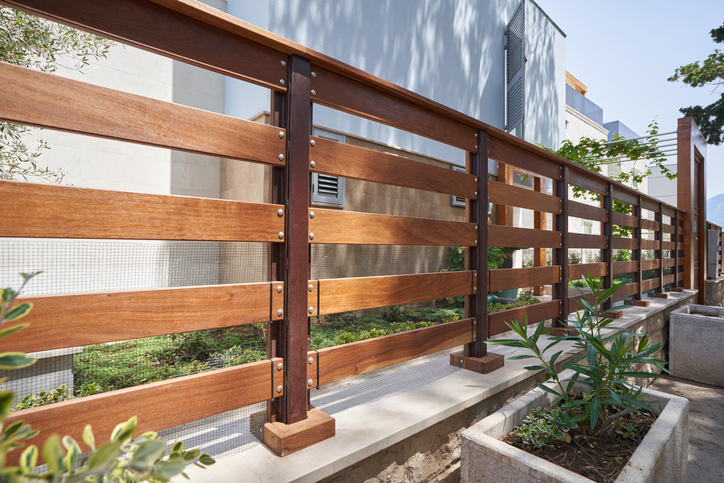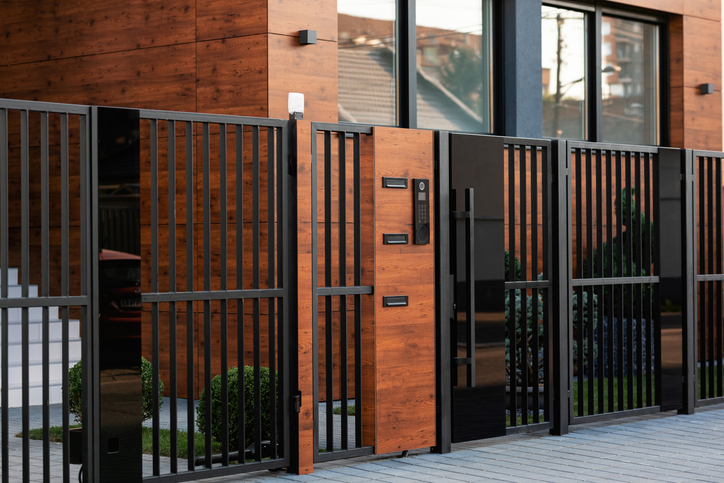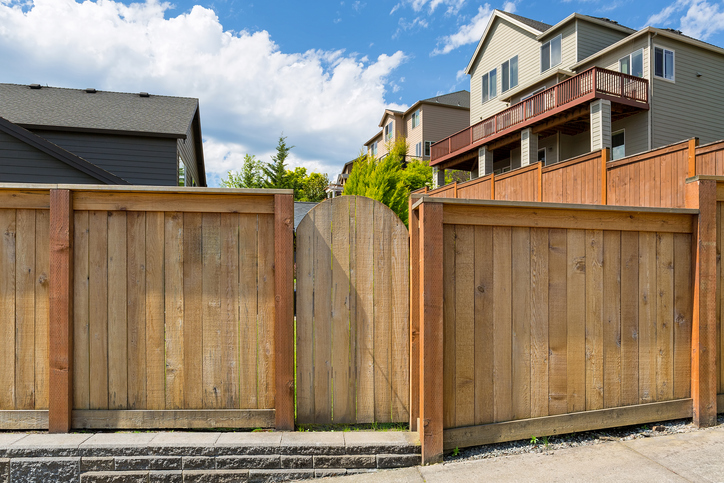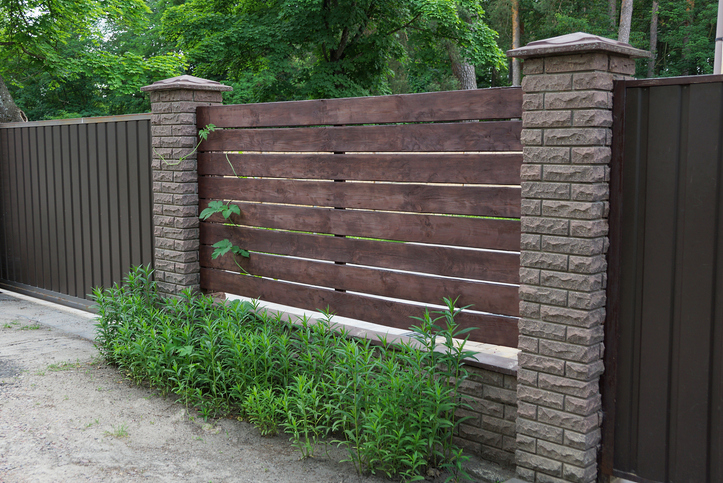Hey there, fellow homeowner! I’ve learned that a well-maintained fence is more than just an aesthetic touch; it’s a valuable investment. It can make your home look great, keep your property safe, and even boost its value. But like any investment, fences need some TLC to stay in top shape.
In this guide, I’ll share the essential steps of fence maintenance that will help you keep your fence looking great for years to come. From cleaning and inspections to protective coatings and addressing common problems, I’ll provide practical tips and advice that even novice homeowners can follow.

Regular Cleaning and Inspection: The Foundation of Effective Fence Maintenance
As a homeowner myself, I’ve learned that a well-maintained fence is more than just an aesthetic touch; it’s a valuable investment. It can make your home look great, keep your property safe, and even boost its value. But like any investment, fences need some TLC to stay in top shape.
Why is cleaning so important for fence maintenance?
- Removes dirt and grime: Over time, dirt, dust, and other debris can accumulate on your fence, causing it to look dull and discolored. Regular cleaning can help restore its original luster and prevent unsightly stains.
- Prevents damage: Dirt and grime can trap moisture, creating a breeding ground for mold, mildew, and rot. By keeping your fence clean, you can minimize the risk of these damaging elements.
- Enhances appearance: A clean fence looks more attractive and can significantly improve your home’s curb appeal. A well-maintained fence can even increase your property’s value.
How to Clean Your Fence Effectively
The best cleaning method will depend on the type of fence you have. Here are some general guidelines:
- Wooden fences: Use a mild detergent solution and a soft-bristled brush to gently scrub away dirt and grime. Avoid using harsh chemicals that can damage the wood. According to the National Wood Flooring Association, it’s essential to use wood-friendly cleaning products to preserve the integrity of your wooden fence.
- Vinyl fences: A simple soap and water solution is often sufficient for cleaning vinyl fences. Use a soft-bristled brush or a pressure washer on a low setting. The Vinyl Siding Institute recommends cleaning vinyl fences regularly to prevent dirt and grime buildup.
- Metal fences: For metal fences, use a mild detergent solution and a soft-bristled brush. If there is rust, you may need to use a rust remover before cleaning. The American Fence Association provides guidance on maintaining metal fences, including cleaning and rust prevention.
Regular Inspections: A Proactive Approach to Fence Maintenance
In addition to cleaning, regular inspections are essential for identifying potential problems early on. Here’s what to look for:
- Loose boards: Check for any loose boards that may be a safety hazard.
- Sagging posts: Sagging posts can indicate structural problems.
- Cracks and splits: Inspect the fence for any cracks or splits that could compromise its integrity.
- Signs of damage: Look for evidence of rot, mildew, or insect damage.
By conducting regular inspections, you can address issues promptly and prevent them from escalating into more serious problems.
Remember: The frequency of cleaning and inspections may vary depending on your local climate, the type of fence you have, and the level of wear and tear it experiences. It’s a good idea to establish a regular maintenance schedule to ensure your fence receives the attention it needs.

Shielding Your Fence: The Power of Protective Coatings
As a homeowner, I’ve learned the importance of protecting your fence from the elements. A well-maintained fence not only adds to your home’s curb appeal but also helps to protect your property and increase its value.
Why Choose Protective Coatings for Your Fence?
- Prevents damage: Coatings create a barrier that helps protect your fence from rot, decay, and insect damage. According to the American Society of Landscape Architects, wood fences are particularly susceptible to these issues, and protective coatings can significantly extend their lifespan.
- Enhances appearance: Coatings can give your fence a fresh, new look and help to hide any imperfections. They can also help to restore faded or weathered wood.
- Increases lifespan: By protecting your fence from the elements, you can extend its lifespan and reduce the need for costly repairs or replacements.
Choosing the Right Coating for Your Fence
The best type of coating for your fence will depend on several factors:
- Fence material comparison: Different materials require different coatings. For example, wooden fences may benefit from a stain or sealant, while metal fences may need a rust-resistant paint.
- Climate: Your local climate will influence your choice of coating. If you live in a humid climate, you may want to choose a coating that is resistant to mold and mildew.
- Aesthetic preferences: Coatings come in a wide variety of colors and finishes. Choose a coating that complements the overall style of your home.
Applying the Coating: Tips for Effective Fence Maintenance
Proper application of the coating is essential for its effectiveness. Here are some tips:
- Prepare the surface: Before applying the coating, ensure the fence is clean and dry. Remove any loose paint, dirt, or debris.
- Follow manufacturer’s instructions: Each coating product has specific application instructions. Follow these instructions carefully to ensure optimal results.
- Consider professional application: If you’re not confident in your ability to apply the coating yourself, consider hiring a professional painter or contractor.
Additional Tips
- Recoat regularly: The frequency of recoating will depend on the type of coating and the climate. Consult the manufacturer’s instructions for recommendations.
- Inspect for damage: Regularly inspect the coating for any signs of wear or damage. If you notice any issues, address them promptly.
- Protect from sun exposure: Excessive sun exposure can cause the coating to fade or deteriorate. Consider using a UV-resistant coating or taking other measures to protect your fence from the sun.
By choosing the right fence for your property and applying the right protective coating properly, you can significantly enhance your fence’s durability, appearance, and overall value.

Troubleshooting Your Fence: A Guide to Addressing Common Problems
As a homeowner, I’ve learned the importance of protecting your fence from the elements. Over the years, I’ve dealt with various weather-related challenges that can affect the durability and appearance of a fence.
Rot and Decay: Addressing a Common Fence Problem
I once noticed that a section of my wooden fence was starting to rot. The wood was soft and spongy, and there was a musty smell coming from the affected area. I knew I needed to take action quickly to prevent the damage from spreading. I decided to replace the rotten section of the fence with new wood. To prevent future rot, I made sure to seal the new wood with a weather-resistant sealant and ensure that the fence had adequate ventilation.
According to the University of Minnesota Extension Service, wood fences are particularly susceptible to rot and decay, especially in humid climates. Regular inspections and preventive measures are essential to protect your fence from these issues.
Insect Damage: Protecting Your Fence
Carpenter bees have been a persistent problem for me. They’ve created several holes in my wooden fence, leaving behind piles of sawdust. To address this issue, I’ve sealed the holes with caulk and wood filler. I’ve also taken steps to prevent future infestations by keeping the area around my fence clean and free of debris.
The National Pest Control Association recommends regular inspections for signs of insect damage, such as holes in the wood, piles of sawdust, or galleries created by termites. Prompt action is essential to prevent further damage and protect the structural integrity of your fence.
By addressing these common fence problems promptly, I’ve been able to maintain the integrity and appearance of my fence. I hope this information helps you to do the same.

Weatherproofing Your Fence: A Year-Round Maintenance Approach
As a homeowner, I’ve learned the importance of protecting your fence from the elements. Over the years, I’ve dealt with various weather-related challenges that can affect the durability and appearance of a fence.
Winterization Tips: Maintaining Your Fence in Harsh Weather
During the rainy season, I make sure to clear away any fallen branches or debris from my fence to prevent damage. I also inspect the fence for any loose boards or sagging posts that may have been weakened by heavy rainfall.
Summer Maintenance: Protecting Your Fence from the Heat
During the hot, dry summer months, I take extra precautions to protect my wooden fence from sun damage. I apply a wood preservative every year to help prevent fading, cracking, and warping. I also ensure that the fence has adequate support to prevent it from sagging under the weight of heavy vines or climbing plants.
Mold and Mildew Prevention: Keeping Your Fence Clean
In humid climates, mold and mildew can thrive. To prevent these issues, I clean my fence regularly with a mild detergent solution and a soft-bristled brush. If I notice any signs of mold or mildew, I apply a fungicide specifically designed for outdoor use.
By following these tips, I’ve been able to keep my fence in good condition throughout the year. I hope this information helps you to do the same.
Conclusion
By following these simple steps, you can help keep your fence looking great for years to come. Remember to inspect your fence regularly, apply protective coatings, fix any problems right away, and protect your fence from the weather. With a little care and attention, your fence can be a valuable asset to your property.
As a homeowner, I’ve learned the importance of proper fence maintenance. By following these tips, I’ve been able to keep my fence in good condition and avoid costly repairs. If you’re considering installing a new fence, be sure to research the advantages of installing a privacy fence.
Do you have any questions about fence maintenance or would you like to share your own experiences? We’d love to hear from you! Please leave a comment below and let us know your thoughts. Your feedback can help us improve this guide and provide even more valuable information to other homeowners.

